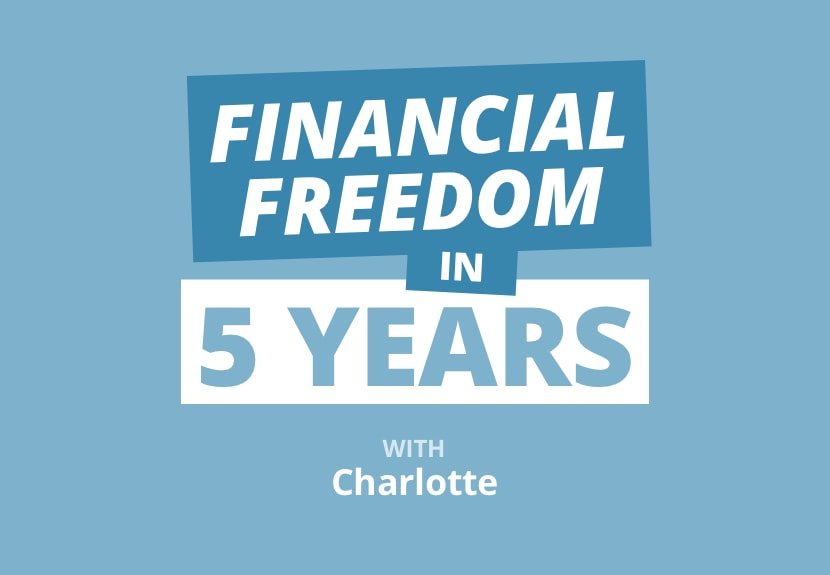Budgeting is like a diet for your bank account. It can be tough to stick to, but it’s worth it in the end. If you’re looking for ways to save money, here are 14 budgeting methods to help you move on. Good luck!
Let us begin by defining what budgeting is and why it is important. It is a practice for managing and planning your money. It entails exploring all the ways you spend cash and identifying how much of that spending should be managed. Furthermore, it is significant because it enables you to engage in financial management and control of your money. It allows you to plan how to spend your income and stick to the plan. Only by adhering to a budget can anyone effectively save, invest, and manage debt.
Can a budget power your financial freedom?
The answer is yes. As a means to map out how much money is coming in, and going out, a budget can help you direct spending toward your goals. By monitoring how much you are paying in interest fees, budgeting will be that constant bell reminding you to clear the debt. In addition, budgets also help create an effective plan that shows which areas of expenditure require urgent attention.
At any age, it enables individuals to immediately take control of their finances. It keeps them from falling into the trap of ‘starting late’, as those who fail to implement this start from a position of disadvantage. The budgeting methods you employ can be the whole difference.
How then do you budget? You need to understand different budgeting methods in order to choose which will work for you.
Types of Budgeting Methods
#1 Incremental Method
These budgeting methods entail making small changes to one of the preceding periods. For example, if the budget for 2021 was 10million, then in 2022 the budget will be 11 million assuming the 10% increase approved budget. In other words, the previous period becomes the base year in the planning. It is a popular method.
The primary advantage of incremental budgeting methods is its simplicity, based on either recent financial results or a recently completed plan. It’s easy to understand and implement, with no surprises down the line for departments involved in this process. Second, when you need consistency and continuous flow of money, the incremental method provides a perfect platform. This is because the founders of the project have the basis of releasing the next round of money into the project.
A significant drawback to this method is that it does not incentivize conducting a comprehensive review of the budget. This can be problematic because the allocation of funds is based upon what is carried forward from previous years. In addition, the budgeting process encourages managers to build too little revenue growth and excessive expenses into incremental budgets. Thereby achieving favorable variances. The other problem is, it may not take into account major structural changes which call for much more significant adjustments down the road. Lastly, you will need to deal with the “use-or-lose -it” attitude fostered by this method.
2) Activity-Based Methods –
These budgeting methods put expenses into categories that represent activities instead of budgets. The name says it all – this is about breaking down expenditures into different activities such as groceries, clothing, etc., so you can see which kind of spending is eating up most of your money.
Because the budget is broken down by activity, this method does not provide a holistic view of your finances. The advantage of such an approach is that it allows you to see where you are spending the majority of your income. It also enables you to plan for large one-time expenditures such as vacations, home renovations, or buying a car.
3) Value-Based Methods –
Value-based budgeting methods serve to identify value for money that can be achieved through different purchasing options. It helps to choose between alternatives that are close in price but offer varying returns on investment (ROI). You need to justify that the item is in the budget and the value it adds to your operations. Items whose cost is higher than the benefits it brings should not be within budget. Value justification culture helps eliminate low-value items during planning.
4) Zero-Based Methods –
Under the Zero-based budgeting methods, you start from scratch every time you need to create a new plan. All departments will need to justify each item in the budget since nothing is pre-approved. This will bring out some expenses that should be in the budget in the first place. Furthermore, it addresses discretionary expenses very well. You can deploy these budgeting methods when going through hard times. The disadvantage of this method is that it requires a considerable amount of practical knowledge and is extremely time-consuming.
What are the levels of involvement in budgeting methods choice?
There are three levels of involvement during budgeting;
# Top-Down Budgeting Methods
In a top-down system, the company management determines the budget. Management then allocates funds to different departments and work units/divisions, who must prepare their own budgets within those parameters. In a household setup, the bread-earner determines the budget and communicates to family members. These budgeting methods have the drawback of getting staff buy-in, but they come with the advantage of being accompanied by resources.
# Bottom-Up Budgeting Methods
In this method, managers present individual budgets to management, who subsequently aggregate them into one company-wide budget. In a household setup, family members present their individual requirements. The budget is put together to form the aggregate family budget.
# Negotiated Budgeting Methods
The involved parties discuss and negotiate the total amount that will be spent on each area of expenditure. This works well in the household as all members of the family are involved in the process. It can also be painful if there is no compromise on some items.
What are the common budgeting techniques?
Having gone through the types of budgeting methods and levels of involvement, we can look at some techniques you can use for implementation.
#1 Pay Yourself First
This is about putting aside money for your personal savings before you can pay anyone else. The advantage of this method is that by paying yourself first, you automatically accumulate funds for needs. There is also peace of mind in knowing that there is enough money available for emergencies. The disadvantage of this method is that it requires discipline, and only people comprehend why they should pay themselves.
#2 The Traditional Budgeting Method
This method (AKA incremental budgeting)is based on the misconception that you should spend less than you make. It neglects to take into consideration all sources of income, which could include benefits or investment returns. Notwithstanding this, it remains popular due to its simplicity and consistency. All you need is to reduce your cash outflow from income.
#3 Stop Procrastinating
This is not a technique parse. But rather a call to action. It provides a list of steps to determine where you are today and where you target to reach. It encourages people to take an inventory of their financial situation, including credit cards and loans, and highlight areas for improvement. Apply this to a powerful technique and watch your fortunes grow. There is no shortage of information that you can use, but rather a lack of action towards goals. Procrastination is a killer of all budgeting methods efforts.
#4 Sub-Savings Methods –
This scheme involves having sub-savings accounts for each goal or item of expenditure. This scheme works well for people who have a number of goals and would like to break them down into smaller, more manageable chunks. You need to set aside money every month for those annual expenses. I would recommend three separate savings accounts for you. One should be for essentials and the other one for annual expenses such as insurance expenses. The last one should be long-term goals, such as a holiday trip to Africa or your home purchase. Deposit emergency funds here as well.
#5 Decide how many efforts you’re willing to devote to the budgeting methods you choose.
This technique involves conducting a reality check on your lifestyle. If you are approaching your 30s, then you know it’s time to start saving and planning for your children’s education and welfare. However, if you are in your 40s, then you must work on becoming debt-free soon. Budgets bear fruit when with solid commitment. Anything short of that will fail to achieve the desired results. The effort or sacrifice will be commensurate with the goal at hand.
#6 Compare Manual and Digital Methods
And this technique is about how you track expenditure manually versus using a digital. The advantage of a manual tool is that it enables you to track down details quickly, whereas the downside is that it is cumbersome, and you can miss out on some items. In contrast, most budgeting software packages have automated reports which highlight spending pattern trends. This allows you to spot where most of your money goes, so you can make necessary adjustments. Whichever method you use, make sure to remain disciplined.
#7Budget Culture-
The best thing about this method is that it helps a culture of Good Money Manners. All transactions are recorded as they occur and not left for others to do. You can therefore make adjustments according to changing circumstances or inspiration. Nothing in can beat culture. The challenge will be achieving the right budget mindset that will drive to continuously budget.
#8 The 60% Solution-
These budgeting methods focuses on the idea that you should allocate 60% of your monthly income to essential items. The other goes towards discretionary expenses and savings. It allows people to take advantage of life’s little pleasures while balancing with other expenses. Some people feel that this technique leaves big room for expenses without focus.
#9 The 80/20 Budget-
These budgeting methods are based on the 80/20 principle, which states that 20% of your effort or things will contribute to 80% of a certain result. In terms of personal finance, this means that 20% of your budget items make up the majority of your monthly spending. Focus on this 20% to make sure each cent is wise. Digging deep into your essential expenses can result in major savings. For example, you can ask yourself, are you living beyond your means through the rent expense. Can you get a similar house at a cheaper price? This does not mean you ignore the 80% of expenses that make 20% of your income.
#10 The Envelope System budgeting methods
The envelope system is ideal for those who like to keep track of their expenditures item by item. An envelope is just a symbol of each item. The envelope can be physical or digital on your phone. Funds are spread across the different envelopes and deducted each time there is an expense. Then, when the envelope is empty, they stop purchasing items for that purpose until they have replenished their funds. What is a way to manage your expense? Sorry, darling, we cannot do dinner tonight, we exhausted the last week.
#11 50/30/20 Budgeting methods
With this technique, you divide your income into three groups. Make sure that no more than 50% of your earnings are spent on essentials such as rent and transport., 30% goes to discretionary spending & leaving 20% for savings purposes. Many people consider this method conventional wisdom.
#12 Find Out Where You Are And What You Value –
A budget will help you identify what’s most important to you and where you stand financially. If you value owning a house, you need to know exactly how much you need to save each month. It will also help to track your progress. How about your value? People tend to sacrifice more for what they value. Valued items in the budget will get the same attention as essentials to most people.
#13 Zero-based Budgeting methods
The main objective of this technique is to make sure you spend your money on what you value, not on what other people think is important. It involves planning all your expenses in advance, then sticking to that plan by making sure costs are covered one month before they occur. An example is when you achieve considerable savings in the budget in one month. Do not carry that money to the next month. Instead, invest that amount and start the next month at zero. This will help build on the lessons of the previous month.
#14 50/30/10/10 Budget –
One of the main reasons personal budgets fail is because of their failure to provide for fun. Fun is also an essential part of life, so incorporating some fun activities into your budget can help you balance spending with saving. 50% of your earnings should go to essentials, 30% to discretionary spending, 10% to savings, and 10% to fun activities. The argument here is that you need to stick to a plan that works. If you are unable to avoid that baseball match or that evening dinner, then why not plan for it?
Which budgeting methods work best?
It really depends on you and your lifestyle. Some people work best with a clear-cut plan of what spending is expected. The beauty of budgeting methods is that there are so many to choose from! So think about which one you would like to try first, and see if it works for you. You can even decide to work with more than one. Generally speaking, a more involved budgeting method will give you more control over your spending habits. You can see the similarities of the methods that you can modify to your fit.
No matter which budgeting methods you ultimately decide on, be sure to take time to write down all your expenses throughout the month – this way you’ll have a better understanding of where your money’s going and how much you’re spending each month.
Conclusion: There are many types of budgeting methods that can be used. It’s important to know the difference between them, and which might work best for you. From there, it is up to you how involved in your own budgeting process you want to get!
No matter what method suits your needs best, or if you prefer a combination of various techniques-know that with time, patience, and dedication it will probably pay off in the end when coupled with some wise financial decisions. If this blog post has answered some questions about these 14 budgeting methods, then please subscribe below, so we can help answer any other questions on your mind! We also invite you to share our article on social media sites like Facebook or Twitter.



